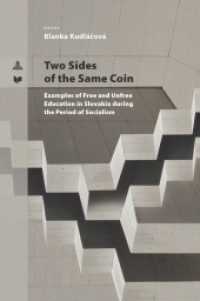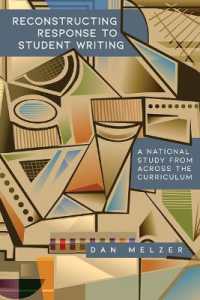- ホーム
- > 洋書
- > 英文書
- > Architecture
Full Description
Exploring the aristocratic villas and court culture of Córdoba, during its 'golden age' under the reign of the Umayyad dynasty (r. 756-1031 AD), this study illuminates a key facet of the secular architecture of the court and its relationship to the well-known Umayyad luxury arts. Based on textual and archaeological evidence, it offers a detailed analysis of the estates' architecture and gardens within a synthetic socio-historical framework. Author Glaire Anderson focuses closely on the Córdoban case study, synthesizing the archaeological evidence for the villas that has been unearthed from the 1980s up to 2009, with extant works of Andalusi art and architecture, as well as evidence from the Arabic texts. While the author brings her expertise on medieval Islamic architecture, art, and urbanism to the topic, the book contributes to wider art historical discourse as well: it is also a synthetic project that incorporates material and insights from experts in other fields (agricultural, economic, and social and political history). In this way, it offers a fuller picture of the topic and its relevance to Andalusi architecture and art, and to broader issues of architecture and social history in the caliphal lands and the Mediterranean. An important contribution of the book is that it illuminates the social history of the Córdoban villas, drawing on the medieval Arabic texts to explain patterns of patronage among the court elite. An overarching theme of the book is that the Córdoban estates fit within the larger historical constellation of Mediterranean villas and villa cultures, in contrast to long-standing art historical discourse that holds villas did not exist in the medieval period.
Contents
Contents: Introduction; Social dimensions of patronage; Architecture and ornament; Gardens; The landscape of sovereignty; Epilogue; Appendix; Timelines; Bibliography; Index.








